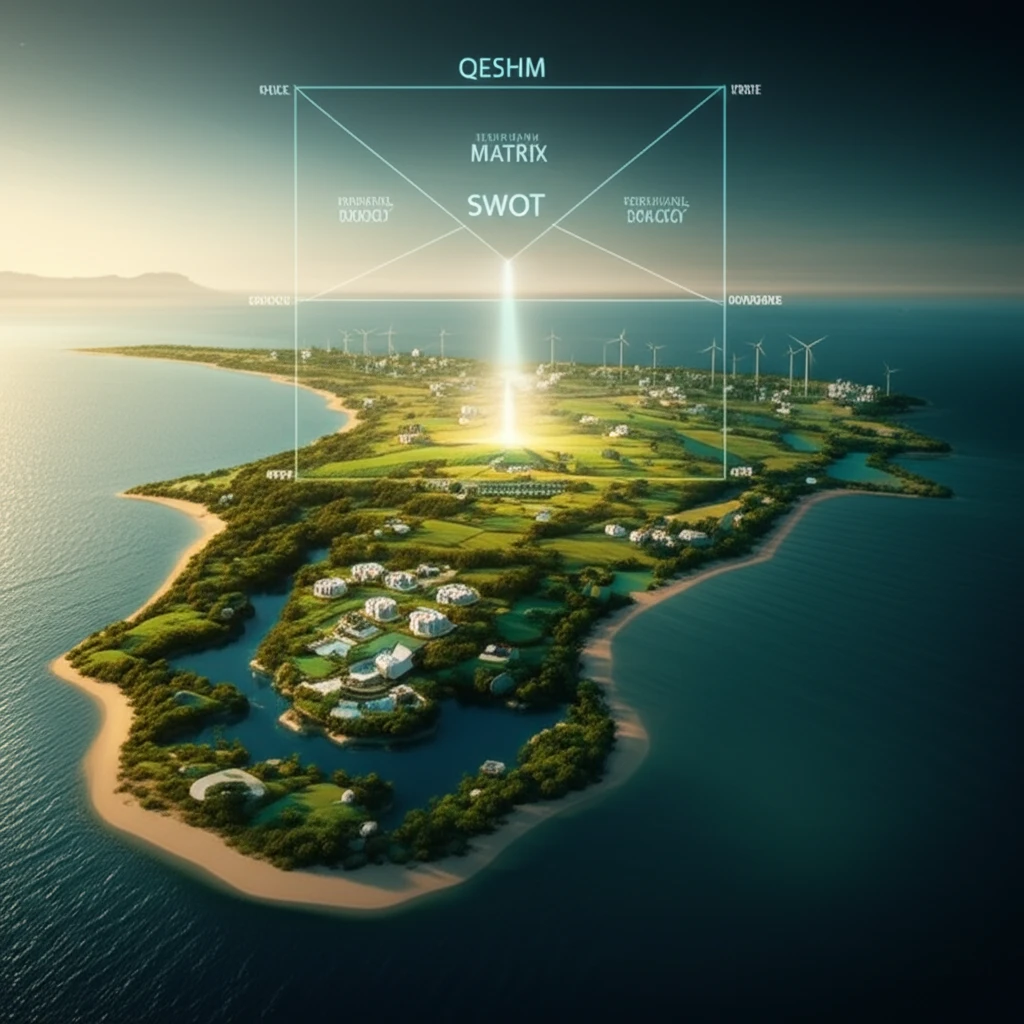
Qeshm Island's Future: How Smart Planning Can Save This Coastal Paradise
"A strategic approach to human settlement development using the SWOT model offers a sustainable path forward for Qeshm Island."
Coastal zones are some of the most dynamic and precious environments on Earth. They teem with biodiversity, offer critical resources, and serve as hubs for human activity. But this intersection of natural wonder and human ambition also makes them incredibly fragile. Balancing economic development with environmental protection in these areas is a challenge that requires careful planning and innovative solutions.
Qeshm Island, located in the Persian Gulf, exemplifies this challenge. This beautiful island boasts a rich cultural heritage and significant economic potential, particularly in tourism and industry. However, like many coastal regions, Qeshm faces increasing pressure from population growth, unplanned development, and the exploitation of natural resources. These pressures threaten the island's delicate ecosystems and the long-term well-being of its inhabitants.
To address these challenges, a strategic approach to human settlement development is crucial. One powerful tool for this purpose is the SWOT (Strengths, Weaknesses, Opportunities, and Threats) model. By analyzing these key factors, planners can develop strategies that leverage the island's strengths, address its weaknesses, capitalize on opportunities, and mitigate potential threats. This approach can pave the way for sustainable development that benefits both the environment and the community.
The SWOT Model: A Roadmap for Sustainable Development

The SWOT model provides a structured framework for analyzing the internal and external factors that influence a project or organization. In the context of Qeshm Island, this means considering:
- Strengths: What advantages does Qeshm Island possess? This could include its natural resources, strategic location, cultural heritage, or existing infrastructure.
- Weaknesses: What limitations or challenges does the island face? Examples might include inadequate infrastructure, environmental degradation, or a lack of skilled labor.
- Opportunities: What external factors could benefit Qeshm Island? This could include growing tourism demand, technological advancements, or government initiatives promoting sustainable development.
- Threats: What external factors could pose a risk to the island? This might include climate change, economic instability, or unsustainable development practices.
- SO Strategies: Use strengths to capitalize on opportunities.
- ST Strategies: Use strengths to minimize threats.
- WO Strategies: Minimize weaknesses by taking advantage of opportunities.
- WT Strategies: Minimize weaknesses and avoid threats.
A Call to Action: Protecting Qeshm Island's Future
Qeshm Island stands at a crossroads. By embracing strategic planning and prioritizing sustainable development, the island can safeguard its natural beauty, cultural heritage, and the well-being of its community for generations to come. The SWOT model provides a valuable framework for achieving this balance, ensuring a vibrant and resilient future for this coastal paradise.
